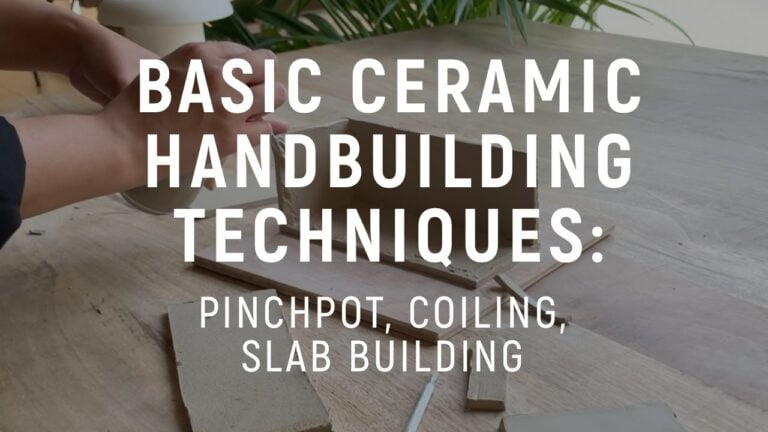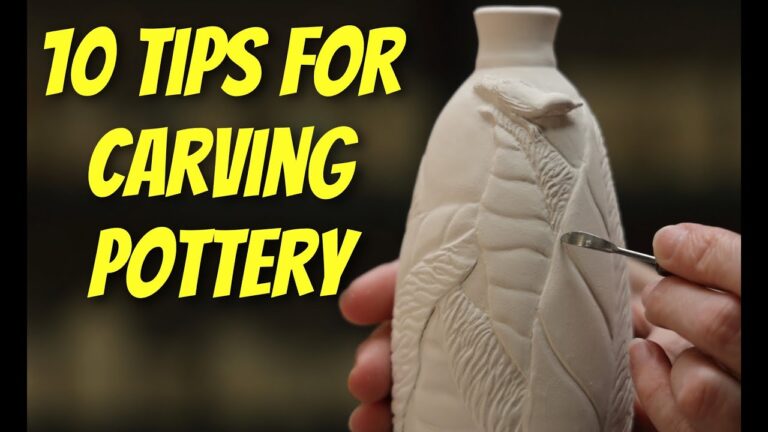Discover the ancient art of clay pot firing techniques in this fascinating article. From traditional methods passed down through generations to modern innovations, we explore the diverse ways in which clay pots are fired to create stunning works of art. Join us on a journey through the history and techniques of clay pot firing, and learn how this timeless craft continues to inspire artists and artisans around the world.
What is the modern way of firing pottery wares?
In modern pottery making, the process of firing wares involves bisque-firing in an electric kiln followed by the application of special raku glaze to the pots. The final step includes glaze firing in a raku kiln at high temperatures ranging from 1470-1830F (800-1000C). This method ensures a durable and beautifully finished pottery piece that is both functional and aesthetically pleasing.
What are the distinctions between bisque firing and glaze firing?
Bisque firing and glaze firing are two crucial steps in the ceramic-making process. Bisque firing involves heating the pottery at a lower temperature, typically between 1650-1940°F, to remove any moisture and organic materials. This process hardens the clay and prepares it for glazing. On the other hand, glaze firing is done at a higher temperature, usually between 1830-2370°F, to melt and fuse the glaze onto the pottery, creating a smooth and colorful finish.
While bisque firing focuses on preparing the pottery for glazing, glaze firing is all about finishing and enhancing the appearance of the ceramic piece. The bisque firing stage is essential for removing any impurities and ensuring the clay is strong enough to withstand the high temperatures of the glaze firing. Glaze firing, on the other hand, is the final step where the magic happens – the glaze melts and fuses with the pottery, creating a durable and beautiful finish that enhances the overall look of the piece.
In summary, bisque firing is like the foundation of a building, providing a strong base for the glaze to adhere to, while glaze firing is like adding the finishing touches to a masterpiece. Both processes are essential for creating high-quality ceramics that are not only visually appealing but also durable and long-lasting. Understanding the difference between the two firing techniques is key to mastering the art of ceramics and creating stunning pieces that will stand the test of time.
Can pottery be done without a kiln?
Yes, it is possible to do pottery without a kiln. One alternative method is air-drying clay, which involves allowing the clay to dry naturally over a period of time. This process can take several days to weeks, depending on the thickness of the clay and the humidity of the environment. Once the clay is completely dry, it can be painted and sealed to preserve the finished piece.
Another option for pottery without a kiln is using a microwave or oven to cure the clay. This technique involves sculpting or molding the clay, then baking it at a low temperature for a specified amount of time. While this method may not produce the same results as traditional kiln firing, it can still be a fun and accessible way to create pottery at home.
Mastering the Art of Clay Pot Firing
Learn the ancient technique of clay pot firing and unlock the secrets to creating beautiful and durable pottery. With a focus on mastering the art of firing clay pots, you will discover the perfect balance of heat and timing to achieve stunning results. Elevate your pottery skills and create masterpieces that will stand the test of time with this hands-on and immersive experience in clay pot firing.
Unlocking the Secrets to Successful Pottery Firing
Are you ready to take your pottery firing to the next level? Unlock the secrets to successful pottery firing with these expert tips and techniques. From understanding the different types of kilns to mastering the right temperature and duration for each type of clay, this guide will help you achieve the perfect results every time. Whether you’re a beginner or a seasoned pro, these insights will elevate your pottery firing game and leave you with stunning, professional-quality pieces. Say goodbye to guesswork and hello to consistently successful pottery firing.
Elevate Your Pottery Skills with Firing Techniques
Are you ready to take your pottery skills to the next level? Elevate your craft with advanced firing techniques that will bring your creations to life like never before. From raku firing to saggar firing, there are endless possibilities to explore and experiment with. These techniques will not only enhance the aesthetic appeal of your pottery but also allow you to showcase your unique style and creativity.
Raku firing, known for its unpredictable and stunning results, is a technique that involves removing pottery from the kiln while it’s still glowing hot. This process creates beautiful metallic and smoky finishes that are sure to impress. On the other hand, saggar firing involves placing pottery inside a sealed container filled with combustible materials, resulting in rich, organic colors and textures. By mastering these firing techniques, you can add depth and dimension to your pottery pieces, making them truly stand out.
Whether you’re a seasoned potter looking to expand your skills or a beginner eager to learn more, mastering firing techniques is essential for taking your pottery to the next level. Elevate your creations with the magic of raku and saggar firing, and watch as your pieces transform into works of art. With dedication and practice, you’ll soon be creating pottery that wows and inspires others.
Incorporating traditional clay pot firing techniques into modern pottery practices not only preserves cultural heritage but also adds a unique and authentic touch to contemporary creations. By embracing these age-old methods, artists and artisans can infuse their work with a sense of history and craftsmanship that sets their pieces apart in today’s fast-paced world. As we continue to celebrate the artistry of pottery, let us remember the important role that clay pot firing techniques play in shaping the future of this timeless craft.



